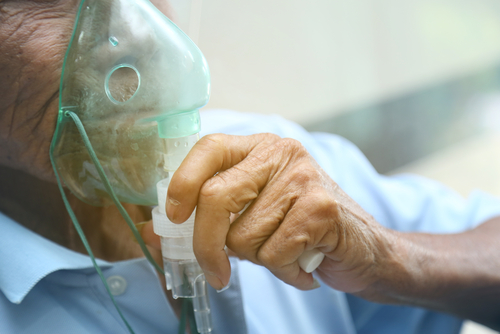Patients with lung diseases such as chronic obstructive pulmonary disease (COPD) and bronchiectasis may live better lives when treated with a noninvasive ventilation (NIV) system at home, according to the results of a clinical trial.
Results of the trial were published in an article titled, “Effect of Home Noninvasive Ventilation With Oxygen Therapy vs Oxygen Therapy Alone on Hospital Readmission or Death After an Acute COPD Exacerbation – A Randomized Clinical Trial,” and published in the journal JAMA.
The results were also presented at the 2017 American Thoracic Society (ATS) International Conference in Washington, D.C.
COPD is an umbrella term used to describe several lung diseases, including bronchiectasis. Many COPD patients who leave the hospital are re-admitted within 30 days due to acute exacerbations, which greatly increases healthcare costs associated with this disease.
“The only current treatment we have to give these patients is oxygen therapy, but now we can give them oxygen as well as a ventilator in their home,” Nicholas Hart, the study’s senior author, said in a news release. “We have managed to reduce the likelihood of readmission to hospital by almost 50%.”
“In the trial we used a home ventilator that coordinates itself with the individual patient’s breathing,” Hart said. “The mask ventilator machine works by blowing in air and oxygen to keep oxygen levels high and carbon dioxide, the waste gas, low.”
The Phase 2/3 HOT-HMV trial (Home Oxygen Therapy-Home Mechanical Ventilation, NCT00990132) was designed to assess the benefits of using noninvasive ventilation (NIV) at home in terms of time to hospital readmission or death.
The study from the United Kingdom, led by the team from the Lane Fox Respiratory Service, enrolled 116 patients with a mean age of 67 with persistent hypercapnia (high levels of carbon dioxide in their blood) and who had recently been hospitalized because their COPD had worsened. Fifty-nine patients were randomized to receive only home oxygen and 57 patients were given home oxygen and NIV.
Of the initial 116 patients, 64 completed the 12-month study (28 in home oxygen alone and 36 in home oxygen plus home NIV). Results showed that the median time to hospital readmission or death was 4.3 months in the NIV group compared to 1.4 months in the home oxygen only group.
Over one year, the risk of readmission or death was 63.4 percent in patients receiving home oxygen plus home NIV, compared to 80.4 percent in patients with home oxygen alone. This represents a 17 percent reduction in the absolute risk of readmission or death.
Concerning mortality, during the 12 months, 16 patients receiving home oxygen and home NIV died. In the home oxygen alone group, 19 patients died.
One of the patients in the trial, Ronnie Ward, aged 74, experienced several benefits after trying NIV at home.
“Ronnie was in and out of hospital, sometimes spending weeks and months on the wards,” said his wife Julie. “Coming back and forth and spending so much time in hospital was stressful and very demoralizing.”
“We were finding that just weeks after he’d been discharged from hospital, Ronnie would need to be readmitted because he was struggling to breathe again,” she added. “Using the breathing machine every night has taken a lot of pressure off us.”
“These results are extremely promising, but the work will continue,” Hart said. “So far we have found that patients using home oxygen with a home ventilator device are two-thirds less likely to be readmitted within 28 days. This is very important because not only does it maintain a patient’s quality of life but also it has the potential to significantly increase our ability to care for these patients without the need for a hospital stay.”

